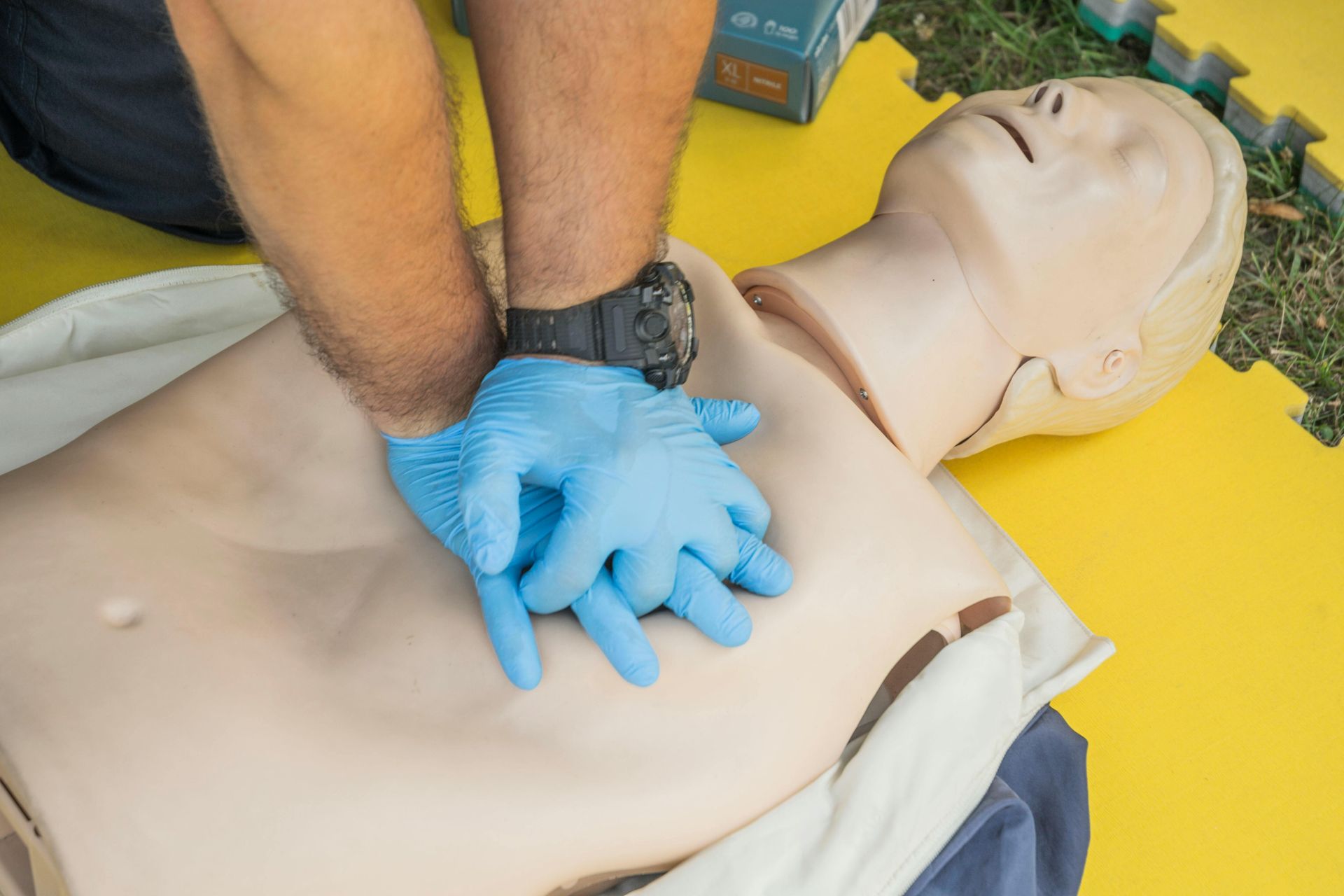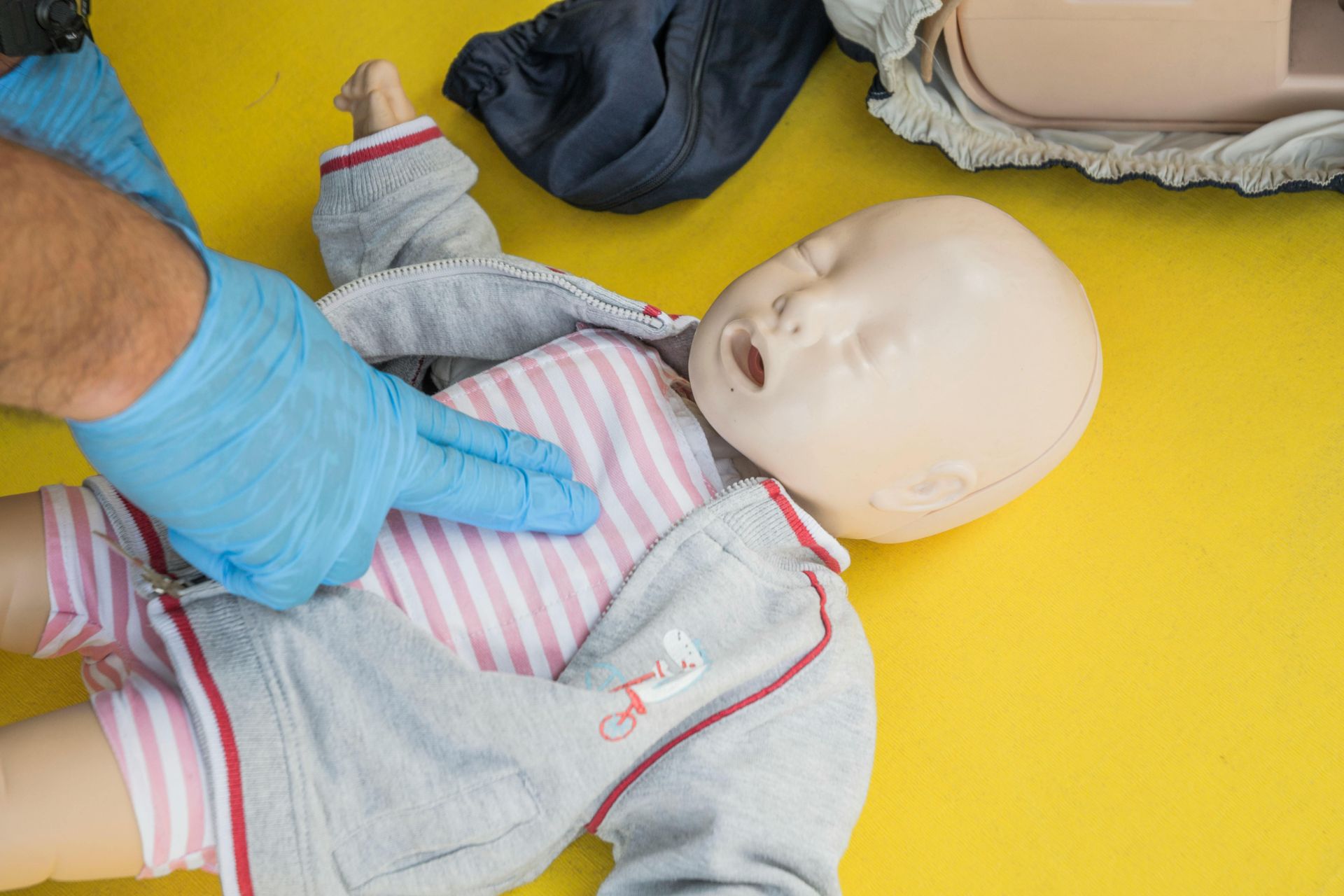Life Support 3
LS3
The RLSS UK Life Support programme is a CPR education programme with an optional basic First Aid element. There are two awards in the programme, Life Support and Life Support 3, which are both certificated by RLSS UK.
The RLSS UK Life Support programme is a CPR education programme with an optional basic First Aid element. There are two awards in the programme, Life Support and Life Support 3, which are both certificated by RLSS UK.
- Identify how to minimise the risk of infection to self and others
- Identify the need for consent to provide first aid
- Conduct a scene survey
- Conduct a primary survey on:
- an infant
- a child
- an adult
- Summon appropriate assistance when necessary
- Identify when to administer cardiopulmonary resuscitation (CPR) to:
- an infant
- a child
- an adult
- Demonstrate CPR using:
- an infant manikin
- a child manikin
- an adult manikin
- Identify when to administer cardiopulmonary resuscitation (CPR) with an automated external defibrillator (AED)
- Identify when to place a casualty into the recovery position
- Demonstrate how to place a casualty into the recovery position
- Demonstrate continual monitoring of breathing whilst the casualty is in the recovery position
- Identify when a casualty is choking
- Demonstrate how to administer first aid to:
- an infant who is choking
- a child who is choking
- an adult who is choking
- Recognise when a casualty is bleeding
- Identify how to administer first aid to a casualty who is bleeding
- Recognise when a casualty is suffering from shock
- Identify how to administer first aid to a casualty who is suffering from shock
The qualification is available to learners aged 12 or over but a learner cannot assume the responsibility of being a first aider in the workplace until they reach the age of 16.
It is recommended that learners hold a minimum of level 1 in literacy or equivalent to undertake this qualification.
It may be possible to grant a reasonable adjustment for a learner who has a disability, medical condition or learning need. For example, assistance could begiven with reading or writing.
Due to the practical nature of the first aid assessment there are physical demands. Learners must be able to get to the floor unaided and successfully demonstrate all required elements of the practical assessment on their own, with the casualty on the floor, as in a real-life situation. For example, a learner will need to get to the floor unassisted and demonstrate effective cardiopulmonary resuscitation on a manikin at floor level.
If a learner has any concerns they should contact their training provider to discuss before attending the course.
The qualification has 2 assigned guided learning hours (GLH) and 2 hours total qualification time (TQT).
GLH indicates the number of contact hours that the learner will undertake being taught or assessed under the immediate guidance or supervision of the trainer/assessor in the classroom.
TQT includes GLH but also considers any unsupervised learning or preparation that a learner may undertake independently which could include self-study or the completion of set tasks.
The minimum classroom contact time of 2 hours can be delivered in 1 day or can be completed over a maximum of 4 weeks ensuring that each session is a minimum of 30 minutes.
The learner ratio for the qualification is a maximum of 12 learners to 1 trainer/assessor.
The qualification is assessed through practical demonstration.
There is no grading of the assessment, learners pass or are referred.
Practical assessment
Scenarios are set recreating a real-life situation as far as possible to enable a learner to demonstrate their knowledge and practical skills. During the practical assessment the learner will be asked set related oral questions by the trainer/assessor.
The practical assessment is ongoing throughout the course with the trainer/assessor making learners aware of when they are being assessed and what they are required to demonstrate.
A learner must satisfactorily complete each scenario to pass the practical assessment.
The qualification is valid for two years from the date of achievement.
Requalification
To requalify learners will need to complete the full 2-hour course again.

